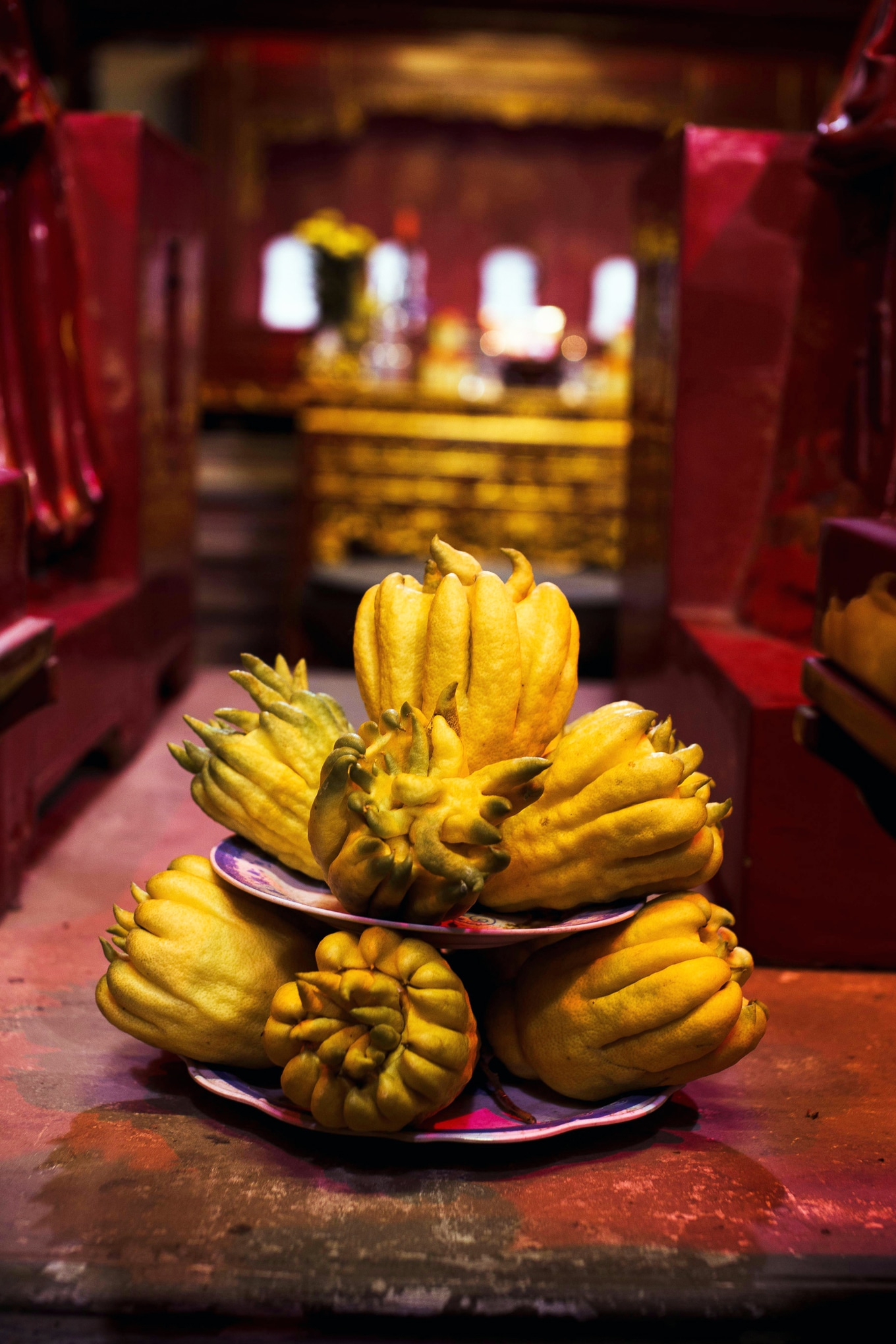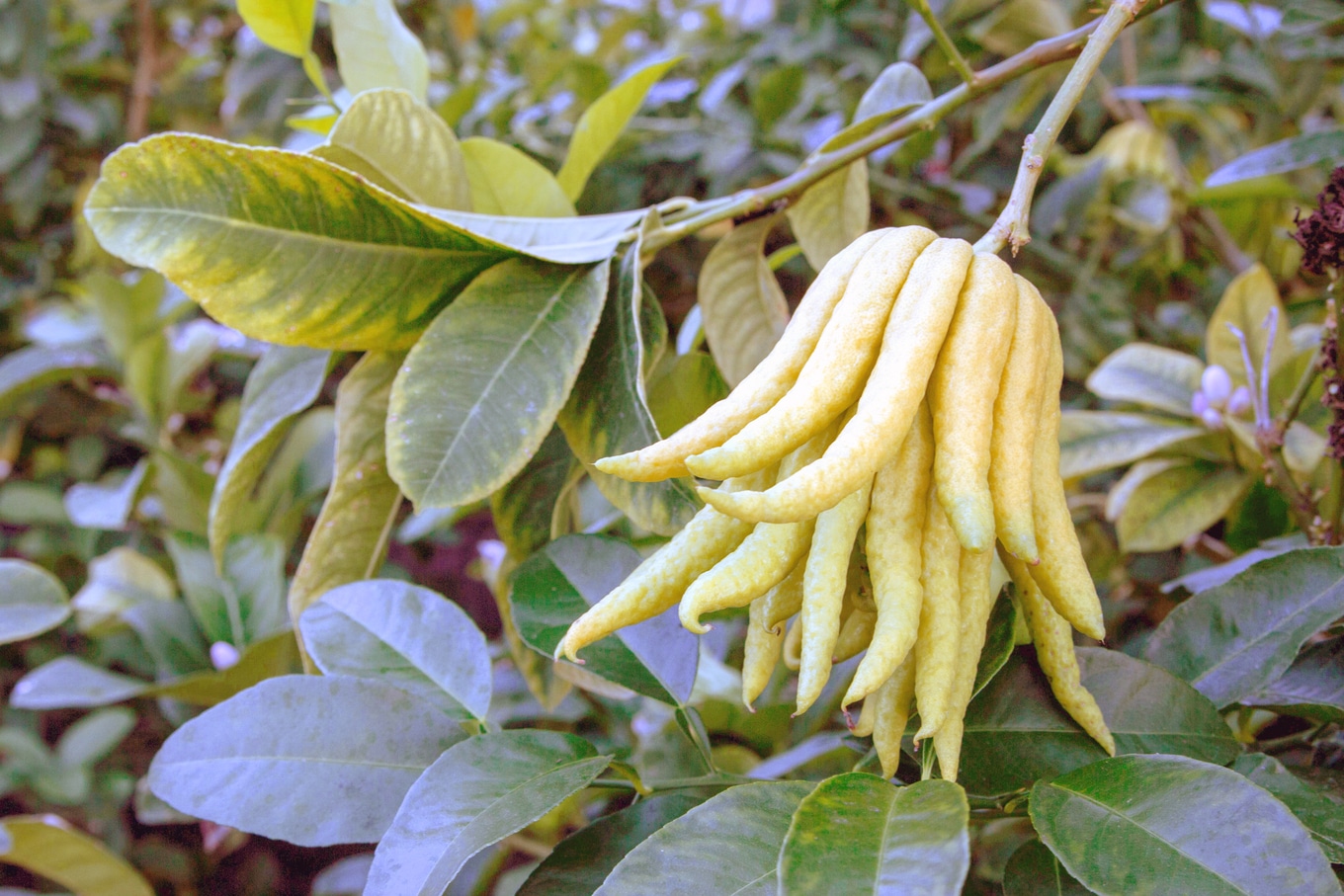With its protruding yellow fingers, Buddha’s hand can be an intimidating fruit to use in your home kitchen. But many chefs have touted its ability to elevate dishes that could benefit from a nuanced citrus flavor without the addition of typical liquid acids.
Lifestyle guru Martha Stewart is a fan. And world-renowned chef Alain Ducasse has employed Buddha’s hand, using its zest to bring a bright note to otherwise earthy and savory dishes.
Getty
Recently, Ducasse—who has earned 21 Michelin stars throughout his career—even highlighted Buddha’s hand in a menu collaboration with fellow chef Daniel Humm, showcasing how this ancient citrus can shine in modern, vegetable-forward cooking. Served for a limited run at both Ducasse’s Le Meurice in Paris and Humm’s Eleven Madison Park in New York City, the Green Cabbage, Hop and Buddha’s Hand dish was crafted to showcase the best of each ingredient with the fingered citron providing a finishing touch.
“The cabbage is grilled,” Ducasse explained to Whitewall. “The reduction of hop brings a bit of bitterness which contrasts with the juice made with the heart of cabbage which is almost milky [and] the citrus brings an acid note to the recipe,” the chef said.
Table of Contents
What Is Buddha’s hand?
Buddha’s hand (Citrus medica var. sarcodactylis) is a variety of citron distinguished by its segmented, finger-like appearance. Unlike other citrus fruits, Buddha’s hand lacks juicy flesh and seeds, consisting primarily of pith and the aromatic outer peel. Its lack of interior pulp might deter the uninitiated, but the beauty of Buddha’s hand lies in its fragrance—bright, floral, and refreshingly citrusy—and its versatility as a zest or infusion ingredient.
The fruit is native to parts of Asia, including northeastern India and China, and has long been celebrated not just for its culinary uses but also for its cultural significance.
 Rachel Claire/Pexels
Rachel Claire/Pexels
In many East Asian traditions, Buddha’s hand symbolizes prosperity and good fortune, often placed in homes as a natural air freshener. It ripens from November to early February, a period that overlaps with many cultural festivities, making it a popular auspicious gift.
The outer skin, or flavedo, of the Buddha’s hand is where all the aromatic oils are concentrated, giving it a pungent fragrance akin to a blend of lemon blossom and jasmine. This quality makes it ideal for applications that require strong aromatic notes without the acidity typically found in citrus juices. The inner pith, known as albedo, is also unusually mild compared to that of other citruses, allowing it to be candied or used in marmalades without overwhelming bitterness.
Expert tips on using Buddha’s hand
Buddha’s hand can be a remarkably versatile ingredient, but it does require some finesse to use effectively.
Chef Kevin Ashton, Culinary Advisor at Restaurantji, with over 40 years of experience in prestigious venues like The Grand Hotel Krasnapolsky, offers several insights for home chefs. “People might find Buddha’s hand intimidating, but treat it like a fragrant lemon zest because it has no pulp or juice,” Ashton tells VegNews.
“The entire fruit is edible, including the skin, and its bright citrus notes work wonderfully in salads, desserts, dressings, or infused into oils,” Ashton says.
To make Buddha’s hand more approachable, think of it as a versatile citrus zest that can add a unique touch to both savory and sweet dishes.
“Since it has no juice or pulp, focus on using the peel and zest,” Ashton says. “It’s incredibly aromatic, so even a small amount can enhance a dish.”
He recommends slicing it thinly to add brightness to your dish or candying it for a unique sweet treat. “Its aromatic zest can also uplift plant-based dishes.”
His favorite uses for the fingered citron? “I love to use it in a Buddha’s hand vinaigrette, which enhances a simple salad with its brightness,” Ashton says. “Another way is infusing it into olive oil, creating a versatile dressing or finishing oil.”
“I also enjoy candying thin slices and incorporating them into desserts or even as a garnish for cocktails, adding a unique citrus twist to my plant-based treats,” Ashton says.
Ashton says the best place to look for Buddah’s hand is at farmers’ markets or specialty Asian grocers but the fruit can be found in many grocery stores when it is in season during the winter months.
To prevent it from drying out, Ashton advises that you keep the Buddha’s hand in the refrigerator for up to two weeks in a perforated plastic bag.
For incorporating Buddha’s hand into dishes, Ashton has three practical tips:
 Pexels
Pexels
1Zesting
“Since Buddha’s hand has no bitter pith, zest or finely grate it directly into dishes like salads, baked goods, or over-roasted vegetables for a bright, citrusy flavor.”
2Infusing
“Add slices or zest to oils, vinegars, or syrups for a fragrant infusion. This is perfect for dressings, cocktails, or drizzles over dishes.”
3Candied
“Buddha’s hand can be candied for a sweet, citrusy treat. The vibrant flavor makes it an excellent garnish for desserts or plant-based dishes.”







